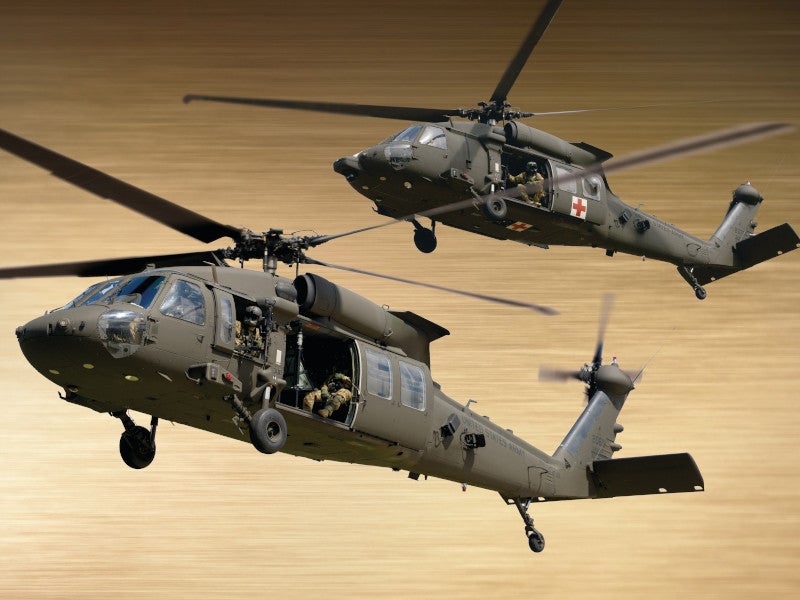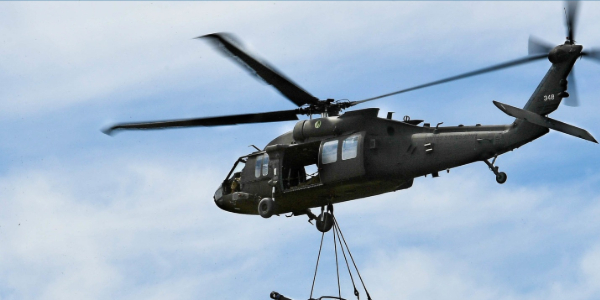UH 60 Black Hawk: From Concept to Contemporary Applications
UH 60 Black Hawk: From Concept to Contemporary Applications
Blog Article
Discovering the Cutting-edge Modern Technology Behind Aircraft Layout and Engineering
The area of airplane layout and design is observing a transformative shift driven by innovative innovations that enhance performance, performance, and sustainability. Advanced products such as carbon fiber compounds and titanium alloys are setting new requirements, while wind resistant advancements and synthetic knowledge are improving procedures and improving end results. As the industry grapples with the challenges of ecological responsibility, developments in lasting aviation innovations promise to improve the future. The effects of these innovations extend beyond efficiency metrics; they may redefine the actual nature of air travel. What might this imply for the market overall?
Advanced Products in Airplane Layout
Just how can the assimilation of sophisticated products change aircraft style? The consolidation of sophisticated products, such as carbon fiber composites, titanium alloys, and advanced ceramics, plays an important role in improving airplane performance and performance.
In addition, innovative materials exhibit enhanced resistance to deterioration and tiredness, resulting in reduced maintenance expenses and prolonged life span. The use of titanium in essential elements aids hold up against extreme temperature levels and stresses, while carbon fiber compounds provide versatility in style and manufacturing processes. This adaptability allows for more wind resistant forms, adding to premium performance qualities.
Furthermore, the integration of clever products, which can change properties in reaction to outside stimuli, opens new opportunities for adaptive systems in airplane layout. uh 60. These technologies assure not only to improve security and functional efficiency yet also to contribute to sustainability initiatives by reducing environmental impact with decreased emissions. In recap, progressed products are redefining the landscape of airplane layout, leading the way for much more effective, resilient, and eco-friendly air travel options
Wind Resistant Advancements for Effectiveness
Wind resistant advancements play a critical role in improving aircraft effectiveness, dramatically influencing fuel intake and total efficiency. Advancements in airfoil style, such as the introduction of supercritical wings, allow for enhanced lift-to-drag proportions, decreasing drag at transonic rates. These innovations allow aircraft to keep higher speeds with lower gas expenditure, directly affecting operational prices and environmental sustainability.
Additionally, the assimilation of winglets has actually confirmed efficient in alleviating vortex-induced drag at the tips of wings, even more improving gas efficiency - uh 60. This style alteration causes a reduction in wake turbulence, adding to improved aerodynamic performance throughout cruise problems

Furthermore, computational liquid characteristics (CFD) devices have actually transformed the screening and improvement of wind resistant shapes, enabling specific simulations of air movement around aircraft (uh 60). This enables engineers to innovate continually, ensuring that modern-day aircraft not just fulfill governing standards but likewise press the boundaries of efficiency in aeronautics

Function of Computer System Simulations
Computer simulations have become an essential tool in the field of aircraft design, enabling designers to conduct in-depth evaluations and optimizations of different layout aspects. These simulations permit the online testing of wind resistant residential properties, structural stability, and efficiency metrics long before physical models are built. By using computational fluid characteristics (CFD) and limited component analysis (FEA), engineers can forecast how air streams around the airplane and how different products will certainly react to anxiety and pressure.
Furthermore, computer system simulations promote the exploration of a variety of variables and circumstances, speeding up the layout procedure and reducing expenses related to physical screening. This capacity not only enhances the precision of forecasts relating to airplane behavior yet also uses understandings into potential design enhancements that may not be quickly noticeable with typical methods.

Additionally, simulations assist guarantee conformity with rigid safety and security laws by permitting engineers to determine and rectify possible concerns early in the style stage. The assimilation of simulation technologies into the aircraft style procedure emphasizes the significant improvements in engineering methods, eventually adding to the growth of much safer, a lot more effective, and ecologically friendly aircraft.
Expert System in Design
Expert system (AI) is reinventing the engineering landscape, specifically in aircraft layout, by improving decision-making procedures and enhancing style operations. Through maker learning algorithms, AI can assess large datasets, revealing patterns and insights that educate design options and improve general performance.
AI applications in airplane design include generative style, where formulas develop multiple design options based upon defined criteria, allowing engineers to examine a more comprehensive variety of possibilities. This not only speeds up the style stage yet additionally ensures that the end products satisfy strict efficiency and safety and security standards.
Moreover, AI-driven predictive analytics assist in upkeep scheduling by evaluating historical information and forecasting potential failures. This aggressive approach reduces downtime and enhances aircraft reliability.
Additionally, AI aids in simulation and modeling, allowing designers to check layouts under numerous problems without the need for physical prototypes. This capability shortens development timelines and minimizes prices related to typical screening techniques.
Sustainable Air Travel Technologies
Exactly how can the aviation market properly equilibrium growth and ecological obligation? The answer depends on the fostering of lasting aviation modern technologies that prioritize efficiency and reduce carbon discharges. Developments such as lasting air travel fuels (SAFs), which are originated from renewable energies, have actually emerged as an essential part in accomplishing reduced lifecycle emissions. SAFs can substantially lower the carbon impact of flights, making them a viable alternative to typical jet fuels.
Moreover, innovations in airplane design, such as the growth of lighter products and even more aerodynamically reliable shapes, add to boosted fuel efficiency. Electric and hybrid propulsion systems are additionally acquiring traction, supplying a path to reduce reliance on nonrenewable fuel sources and lessen greenhouse gas discharges.
The assimilation of these modern technologies is sustained by governing structures and market partnerships focused on establishing enthusiastic sustainability targets. Electronic devices like data have a peek at this site analytics and artificial knowledge can enhance trip operations, additionally boosting gas performance. By embracing sustainable methods and technologies, the aeronautics market can not just meet the expanding need for flight but additionally play an essential role in addressing climate adjustment, ensuring an extra sustainable future for air transport.
Conclusion
The merging of advanced products, wind resistant technologies, and advanced innovations marks a significant advancement in aircraft layout and engineering. The combination of carbon fiber compounds, titanium alloys, and AI-driven processes not just boosts efficiency and performance however also streamlines process and anticipating upkeep.

Computer system simulations have actually ended up being a vital tool in the field of airplane style, making it possible for engineers to perform in-depth evaluations Continued and optimizations of various design elements.The merging of innovative products, wind resistant advancements, and advanced innovations notes a substantial evolution in aircraft layout and design.
Report this page